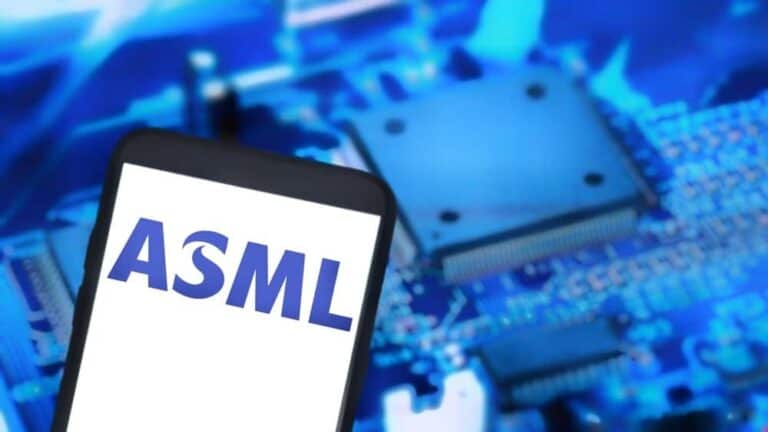A new ASML facility in Beijing is intended to make existing chip manufacturing equipment more easily reusable for Chinese customers. However, those same customers could turn to Huawei as early as next year to get their EUV machine fix, as the Chinese giant hopes to break the ASML monopoly on the frontier of lithography for the first time.
The plans for expansion in China are found in ASML’s annual report, as The Register writes. It is a striking turn of events, given that export restrictions from both the Netherlands and the U.S. have only gotten tighter in recent years. Nevertheless, ASML would still like to serve the highly lucrative Chinese market, and even better than it has before. It aims to use its new Beijing facility for maintenance and refurbishment, avoiding costly replacements.
Replacement and refurbishment
Replacing and refurbishing ASML machines is a familiar approach of the Dutch chip machine maker. Similarly, the brand-new, state-of-the-art High-NA EUV lithography machines consist of 10 discrete modules, each separately upgradeable and replaceable. Thus test units, intended for the initial exploration for new chip production techniques, can be gradually transformed to be suitable for mass production. Customers such as TSMC and Intel thus will not have to make their initially shipped High-NA EUV devices a write-off anytime soon. And that would be a major benefit, as each unit costs around 350 million euros.
However, the newly revealed Chinese maintenance facility would only work on machines based on DUV (deep ultraviolet) light. The deployment of EUV (extreme ultraviolet) light has proven considerably more difficult than DUV owing to it being more advanced and complex, which has resulted in the pair of Japanese ASML competitors Nikon and Canon to have never made the move to this side of the light spectrum for their chip equipment.
Huawei steps up
Now it appears Huawei does plan to join ASML in this EUV spectrum. This weekend, it was revealed that the Chinese company has developed a device in this category and is currently readying it for mass production in 2026. Utilizing a process called laser-induced discharge plasma (LDP) technology, Huawei may even be able to undercut its western rival. Despite consuming less energy than ASML’s laser-produced plasma (LPP) technology, this methodology is equally capable of creating 13.5 nanometers of EUV radiation. This feat is required to perform this kind of lithography.
By the way, Canon was already a potential rival to ASML, but not specifically for EUV lithography. With nanoimprint (NIL) machinery, it hopes to make a stab at chip processes that are more advanced than what’s possible with DUV, but without the exorbitant costs associated with EUV. As with Huawei, practical proof is yet to come to make the underlying technology an ASML alternative.
Limit reached?
The breakthrough, if more than a promise, would be a major setback for ASML. With a monopoly in the EUV spectrum, customers have no other option if they wish to compete for the world’s most advanced chips. It would also disprove a prediction made by ASML CEO Christophe Fouquet within just a few months. Indeed, he stated in December that China’s semiconductor industry is some 10 to 15 years behind the West (read: ASML).
Another prediction, made by then-CEO Peter Wennink, may yet come true. He has always vehemently opposed export restrictions against China, which he said would motivate the nation to make it to EUV lithography on its own. It’s certainly motivated now.
To emphasize the need for this innovation: local Chinese chipmakers such as SMIC already seem to have reached the limits of DUV technology, a development direction to which they are condemned by the aforementioned export restrictions. It’s a similar problem Intel ran into between 2015 and 2023, when it operated without EUV machines whereas its rival foundry TSMC did. EUV chip machines are simply breaking through natural limits that chip makers can’t avoid with DUV, which does not contain the precision required for the latest chip manufacturing processes, or nodes.
Conclusion (for now): not a DeepSeek moment
At the end of the day, Huawei must first prove that it is seriously entering EUV-based chip production in 2026. A “DeepSeek moment” has yet to transpire. Until a chip is produced that can compete with the state-of-the-art from ASML equipment, the export restrictions have clearly limited China’s reach. With the Huawei Kirin 9000S processor, which seemed seemingly impossible to manufacture with DUV machines, it seems that SMIC otherwise had accepted unacceptably low yields (yields) to produce such an advanced chip on the old equipment. At scale, such low yields are simply not maintainable with ASML’s EUV approach. Only if the efficiency gains from Huawei’s LDP technology for EUV may offset any low yields initially. We’ll have to wait and see if this claim also pops up in about 18 months’ time.
Also read: ASML: from a leaky shed to the chip industry’s key player
